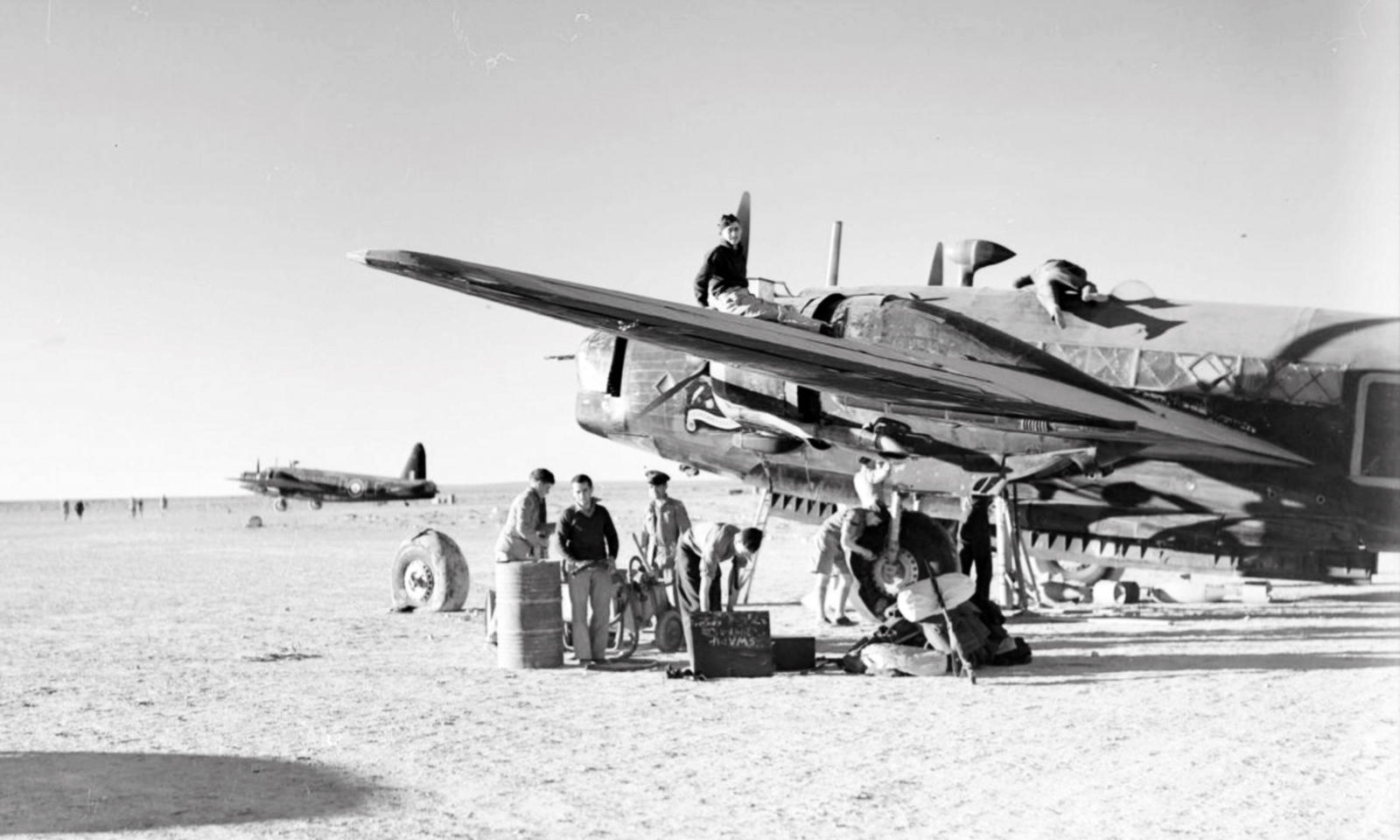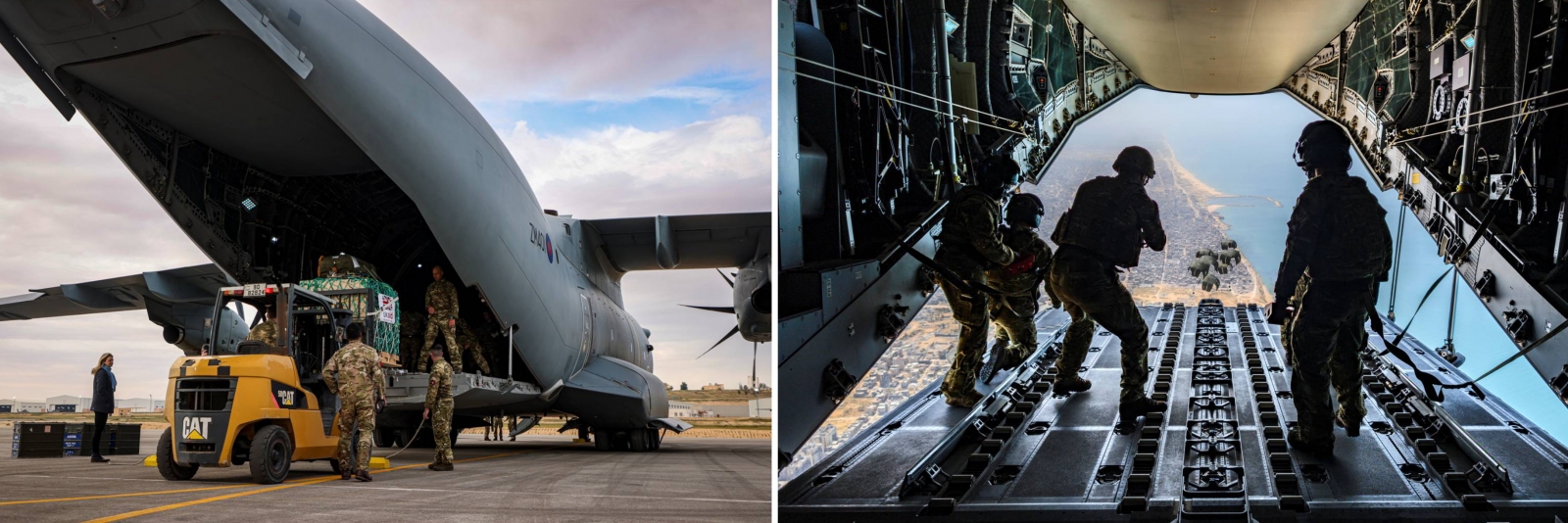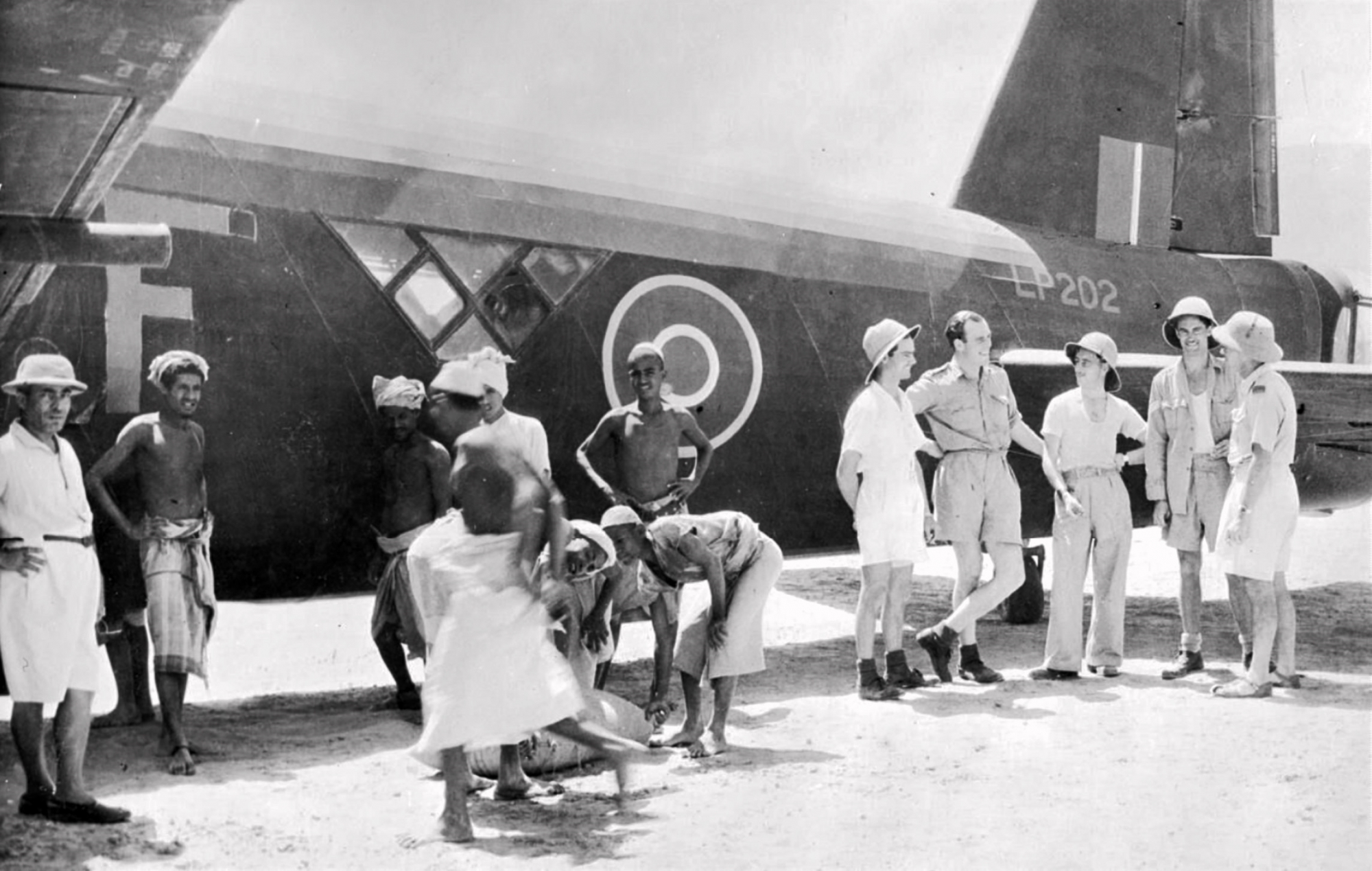RAF Famine Relief Flight Aden May 1944
Header image: Local workers unloading grain from Vickers Wellington B Mark X, LP202, 'F', of the RAF Famine Relief Flight, at Al-Qatn in the Hadhramaut region of the British Aden Protectorate in May 1944, during operations to alleviate famine in the area. The Wellington’s crew are gathered by the tail, (left to right): Sgt R J Oke, Plt Off R Mann (captain), W.O. L H J Sullivan and Flt Sgt N L Davy, talking to an RAF medical officer (far right).
Eighty years ago this month, whilst the Second World War was still raging globally, RAF Vickers Wellingtons airlifted food to a famine hit area of the British Aden Protectorate to help to alleviate a humanitarian crisis. It is perhaps surprising that, during a world war involving every continent, humane operations were still mounted and the resources were made available for them.
The largely barren Aden Protectorate, now the People's Democratic Republic of Yemen, stretched along the south coast of Arabia for some 300 miles and inland for about 125 miles, with access to the important sea lanes of the Gulf of Aden and the Red Sea leading to the Suez Canal. The inland area of Hadhramaut, home to the Hadhramauti people, was ruled by the wealthy and influential Qu’aiti dynasty of sultans under a loose British protectorate. The Hadhramauti’s wealth stemmed from trade with the Far East, particularly Java and the Malaysian peninsula, where they also owned or part-owned properties. The war in the Far East and Japanese occupation closed down their traditional trade routes and reduced their foreign remittances, making it difficult to import goods. Then the Hadhramaut region was badly hit by drought during 1943 and 1944, causing crop failures, which led to starvation and eventually to the deaths of some 10,000 people in the region.
The British Government allocated £300,000 (over £16 million today) to support the aid effort for Hadhramaut and large quantities of food, condensed milk and medical supplies were sent to the port of Mukalla. However, distributing the aid from there was a problem. With RAF Vickers Wellingtons already operating from Aden with 621 Squadron, mainly on anti-submarine duties, in May 1944 a Famine Relief Flight was established at Riyan with eight Wellingtons. It moved to Khormaksar, Aden, the following month. A detachment of RASC soldiers loaded the Wellingtons with the supplies, which were then flown into an emergency landing strip in a dried-up wadi at Qatn, from where they were taken by RAF vehicles and camel trains to the principal towns. The flight airlifted 24 tons of supplies daily, and during May a total of 413 tons of grain and just over eight tons of condensed milk were delivered to the starving population of Hadhramaut.

The Wellington was not the ideal aircraft for this task, its normal load being carried in the bomb bay. The supplies were loaded wherever there was space, with no regard to weight. In addition, the aircraft had to carry enough fuel for the return trip as there were no refuelling facilities on the ground at the landing strip, adding to the all-up weight. In June the climate and the excess weight began to tell on the aircraft; one made a forced landing at Qatn with a burnt-out cylinder, another had the undercarriage collapse at the strip and a further Wellington’s undercarriage collapsed back at Riyan. Relief operations continued with the Wellingtons overflying the strip as low and slow as possible whilst RASC despatchers bundled out the supply packs to freefall to the ground. Amazingly, most survived with few breakages. Although the RAF famine relief airlift operations were insufficient to prevent many deaths from starvation, they did alleviate the people’s suffering and averted an even greater humanitarian disaster.
In a modern parallel, in recent weeks the RAF has been involved in the international coalition relief effort to airdrop supplies into war-torn Gaza to help in averting a humanitarian crisis. An RAF A400M tactical and strategic transport aircraft has delivered around 10 tonnes of food by parachute on each of these drops. Whilst these are small quantities on each drop, the cumulative effect of the international air drops by nine nations’ air forces saw 1,500 tonnes delivered to Gaza in a month as part of the overall relief effort, with the majority of aid arriving by land. As in 1944, the RAF is delivering humanitarian aid in the midst of a war.








